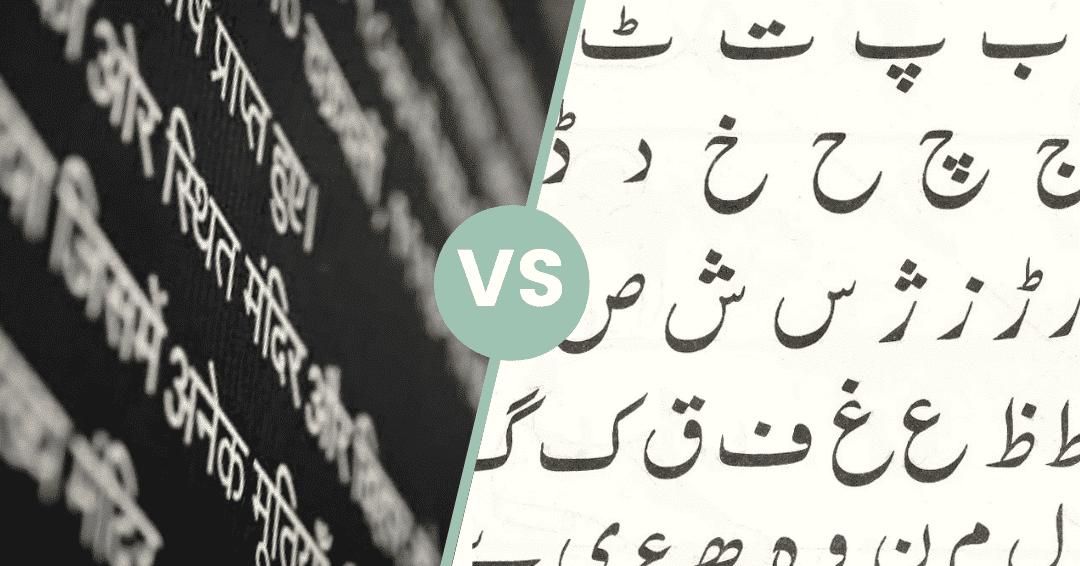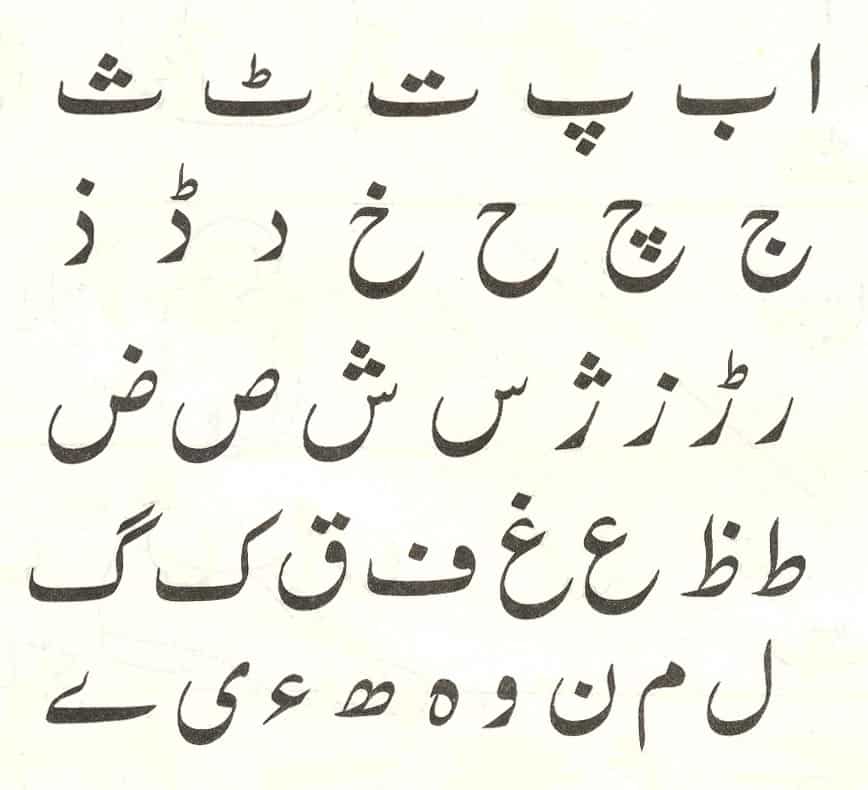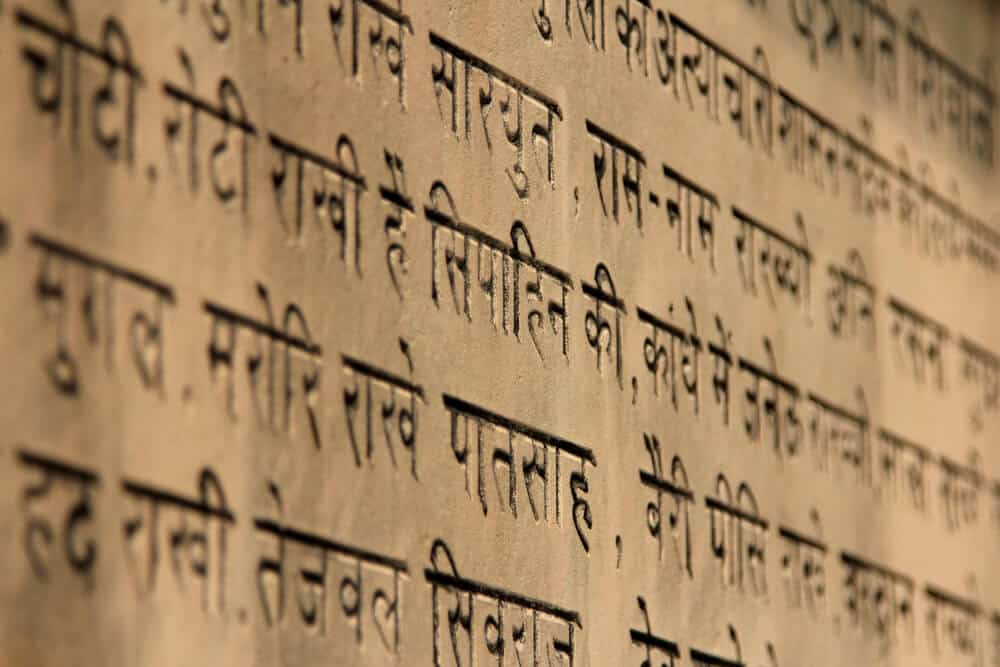Hindi vs Urdu – A comparative study of the two Hindustani languages.
The lingua franca of Northern India and Pakistan, Hindustani is an Indo-Aryan language, derived from the dialect of Delhi, called Kariboli. It has two standardized varieties – Hindi and Urdu. These two unifying languages connect northern India with Pakistan and some parts of the Deccan.
While Hindi and Urdu are official languages in India, Urdu is an official language in Pakistan. This article is a comparative study between both these Hindustani languages – A sort of Hindi vs Urdu analysis if you will.
Hindi Vs Urdu – Speakers
The Hindi language, spoken primarily in India, the country with the second-highest population in the world.
Hindi
With a total of 528 million speakers speaking the language as their native tongue throughout the world and 139 million and 24 million others speaking it as their second and third language, Hindi has a spot in the list of the world’s most popular languages.
It is an official language in India (spoken by 53.6% of Indians) and a recognized minority language in South Africa. Just to make the statistics clear – around 4.46% of the world’s population speaks Hindi as their native language.
Urdu
Coming to Urdu, spoken by a majority of Muslims in Northern India, in the south by some Deccani people, and by the Muhajir people of Pakistan. A few thousand stranded Pakistanis and several immigrants from India’s Bihar also speak Urdu in Bangladesh.
Another smaller community, Khusbas speaks what’s now called the Dhakaiya Urdu in the Old Dhaka region. However, the language has no special status in the country.
It is the national language in Pakistan and one of the official languages of India. Spoken by an estimated 165 million people around the world – It has more native speakers in India than in Pakistan.
Around 40 million Indians speak Urdu as their native language while 30 million native speakers can be found in Pakistan.
Also read: Top 6 Languages For Your Business
History
The languages developed in North India, during the Mughal invasion when Persian influenced the Western Hindi languages of Central India.
The combination of Hindi and Persian influence on the Delhi dialect of ‘Old Hindi’ led to the development of Hindi and Urdu being what they are today.
This ‘Rekhta’ or mixed speech was then included in the list of literary languages and after the partition of the country, the collection of these dialects became the standard Hindi and Urdu languages.
The grammar and vocabulary of the Hindustani language descended from the medieval Indo-Aryan language called the Śauraseni. It’s spoken widely in the Northern belt of India.
When the Delhi Sultanate, established, with Delhi as its capital, Persian the official language of the kingdom. As the interaction between Hindus and Muslims grew, a new language took form.
Hindi’s Indo-Aryan dialect, infused with Persian words. The resultant Urdu language had 25% of its words borrowed from Arabic and Persian loanwords. The remaining 75% of words came from Sanskrit and Prakrit.
The word ‘Hindustani’ comes from the Persian name for North India – popularly called ‘Hindustan, in that area.’ In the 13th century, close to the inception of the language – Amir Khusro made a notable impact as a Hindustani poet.
Also read: Business In The Middle East – Cultural Differences You Need To Know
Hindi Vs Urdu – Script
The Urdu language is written from the right to left. The alphabet of Urdu is taken heavily from the alphabets of Persian, which is also derived from the much older Arabic script.
There are around 39-40 letters in the Urdu script and the language is written in the calligraphic Nasta ‘ līq script.
It has 10 vowels and 10 nasalized vowels. Every vowel is written in four different forms – initial, middle, final, and isolated form.
The Hindi language is written in the Devanagari Script. It is an abugida – meaning that the script is neither purely symbolic nor alphabetic but somewhere in between. It has 11 vowels and 33 consonants and is written from left to the right.
Also Read: 10 Reasons Why Arabic Is An Incredibly Interesting Language
Get your content translated in 70+ languages
Milestone helps you seamlessly translate content & localize your website, products, and services for more reach, better conversions, and greater sales.
Hindi Vs. Urdu – Differences
As we’ve already seen, Urdu is a language associated with Pakistan and its Muslim population while Hindi is associated with Indians and its Hindu population.
The Urdu writing system is called Nasta ’ līq and it has a lot of words borrowed from Persian, Turkic, and the Arabic language. It’s written in the Perso-Arabic script and written from right to left.
In contrast, Hindi is written in the Devanagari script from the left to right. Also, there are only a few foreign words in the language.
Another important difference lies in the completely unfamiliar words used in the languages when written in a highly formal, official manner. If you were to look at a phrase, written formally in both languages, there is little that makes the languages look similar.
Also read: Which Arabic Dialect To Use and Arabic Voiceover Challenges
Hindi Vs. Urdu – Similarities
The association between Hindi and Urdu is what we call digraphia – meaning one language with two writing systems.
If a Hindi-speaking person was to communicate with an Urdu-speaking person, they would be able to understand each other – as long as they keep their respective languages simple and omit any complex words and phrases.
Both languages borrow much of their vocabulary and pronunciation from Sanskrit and Prakrit. A large number of Sanskrit verbs occupy their places in Urdu and the Hindi language stems from Sanskrit.
The two languages have immense similarities in their common talk, the tone of the words and their meanings is perfectly comprehensible by both speakers.
Also Read: Hindi Idioms and Phrases That Can’t be Translated
It’s a wrap
Mahatma Gandhi called ‘Hindustani’ a unifying language for the Hindus and Muslims living in India.
Years later, his words still ring true – Hindi and Urdu bring together India and Pakistan’s diverse multi-regional population.
The two languages have now added various other words (necessarily not the same) to their use. But the root of Hindi and Urdu shall always remain the same.
It is an important part of India and Pakistan’s rich history and shall forever remain so, forever immortalized in the books of their population.
Also read: Top 10 Translation Companies In India
Get your content translated in 70+ languages
Milestone helps you seamlessly translate content & localize your website, products, and services for more reach, better conversions, and greater sales.








